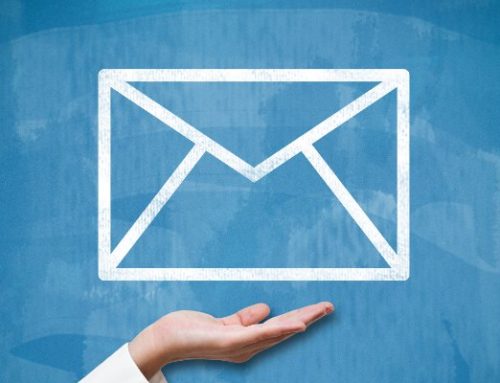5 Pieces of Customer Communication You Need to Automate RIGHT NOW (Here’s why)

Demand News • June 2, 2016

I’m lazy.
Maybe it is better to say I could be construed as lazy. Sure, that sounds a little better.
Allow me to defend myself. I believe we are all products of our environments. I was raised on TV shows that peered into the future – the Jetsons, for example – which offered the promise of automation. Anything could be automated – laundry, brushing your teeth, you name it.

Figure 1 – Me, on a Monday morning
As a six year old kid, the concept of automation was absolutely mind-blowing. And you know what? It still is.
Marketing automation is a brave new world for marketers, sales teams and general managers who are finding ways to interact with their customers more than ever before. You may roll your eyes and assume you’ve seen this article before, and not without reason. Marketing Automation (MA) is one of the most discussed topics in our educational circles, with thousands of articles written in just this year alone.
Much like social media, mobile marketing, CrossFit, or anything else that seems to be ubiquitous overnight, it is a good idea to do a little research before diving in. This is just as true with MA and email marketing. Check out Marketo’s fantastic post on email performance, with breakdowns by industry and email type.

Figure 2 – Numbers. Be afraid. Be very afraid.
The research is clear. Triggered automation offers your company the ability to scale communication efforts, while simultaneously showing better engagement from customers. That’s what the kids call a double dip.
Granted, this is just one data snapshot. Regardless, it is unquestionably compelling. For some added context, the data from the chart above is pulled directly from Marketo’s 220+ billion customer activities across 3,500+ accounts. Real scrappy, those kids over at Marketo. I hope they figure it out soon.
You can bet that I won’t be giving up hope on the automated tooth brush. Like it or not, the world of tomorrow will run on automation. Let’s take a look at the five points of customer communication that we can automate.
The Welcome Email
If you have anything in your marketing tool belt, it should be a welcome email. Normally (but not always!) it is the first correspondence your customer will receive from you. Set the tone and expectations, while thanking the customer for being a part of your new extended corporate family. While you’re at it, push your remaining product offering.
Consider multiple versions of your welcome email. Different content and copy add a personal touch that your competitors may not match. Tailor messaging depending on the history of the customer. A “welcome back, we missed you” message resonates entirely differently than “welcome.” If you don’t think so, tell your wife “have a nice day” instead of “happy anniversary.” It doesn’t go over well. So I’ve been told.
Welcome emails are very easy to create and automate between your CRM and MA systems. Keep these three points in mind when building your automation campaign:
- Cadence – will you send an email after each transaction? Every other transaction? Every log-in, etc.
- Trigger Point – what field in your CRM needs to change to fire the email? A closed opportunity, perhaps?
- Frequency Indicator – determine the field that will keep track of the amount of transactions the customer has rung up. This allows for segmentation of email messaging (one transaction gets the welcome email, two transactions get the welcome back email.)
Lifecycle Direct Mail
Automating email makes a lot of sense. But there is no way to automate direct mail, right?
This would be a really short section if that were true.
Many mail houses are now set up with API and secure file transfer capabilities. As a matter of fact, there is an entire industry built around this premise. It is easier than ever to automatically trigger a direct mail packet for key customer events – for example, right before an expiring contract date, or even a fully-personalized birthday card, if the mood strikes you.
A multi-channel marketing campaign is extremely effective. If your mail house can’t satisfy these needs for you, it may be time to get back out on the direct mail dating scene. Set up an API, automatically send information for the DMs, and you are in business. Can you imagine the possibilities of a fully-automated, multi-touch, multi-channel lifecycle marketing campaign? The excitement is too much. I need to sit down before I pass out.
Win-Back Email
Win-back emails may come in third in this list, but it is only because of how often they are overlooked. Just because a customer leaves doesn’t mean they wouldn’t come back. It’s like Gandalf said, “the (customer) journey does not end here.” Or something like that. Don’t sue me, Peter Jackson.
Let’s go to school on win-back emails. Historically, they yield low returns. And this may discourage lesser marketers. But that’s not you. I don’t know a single business that would refuse even one extra deal a year. Even if that email isn’t a magic bullet, it may lay the ground work for future conversions. According to Return Path, “even though subscribers may not have read a brand’s win-back campaign, 45% of subscribers read subsequent messages.” The knowledge continues to be dropped by looking at, “The average length of time between when people received a win-back email and when they read a subsequent message was almost 2 months (57 days). 75% of subscribers clicked on a subsequent message within 89 days.”
Take the time to set triggered win-back email campaigns, you just might be surprised with your conversion rates. Patience is a virtue.
Customer Checkpoint Emails/Calls
Like anything in life, it is often the unexpected that has the biggest impact. Customer checkpoint communications offer a great opportunity for your company to start planning these unexpected moments. Planning unexpected surprises couldn’t be anymore upsetting to your childhood self, however, business success doesn’t happen by accident.
In the past, I have run a checkpoint campaign that involved our VP of Customer Service making a few calls into our accounts at random. There was no ulterior motive – we just wanted to check in to see how our customers were feeling.
You may also find success in automating emails based on time or behavioral targets. For example, if a customer logs into your platform for the first or second time, ask them if you can offer a helping hand. Or perhaps your crack marketing team can put together a nifty instructional eBook for the customer to use?
Your checkpoint communications should find themselves at the intersection of conversationally casual and meticulously organized. Provide value by being accessible and approachable.
Net Promoter Score®/Customer Feedback Communications
Last, but certainly not least. This is arguably the most important mechanism a company can provide – an avenue for customer feedback. If you’re not familiar with Net Promoter Score®, check out this handy guide to get up to speed.
Automating your NPS email is paramount to capturing customer feedback at just the right time. Most NPS emails can be triggered as a result of close date or a relational milestone with relative ease. But more importantly, how you use that data once it is collected is what sets organizations apart. Knowing how to package data to drive actionable strategy is key.
Many companies are still in a cumbersome and clunky collection and manual analysis phase of their NPS programs. Luckily, there are plenty of solutions out there to help automate the whole darn thing.




